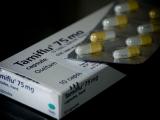Jan 28, 2011 (CIDRAP News) – The 2009 H1N1 pandemic brought to light ongoing controversies about the best use of personal protective equipment (PPE) in healthcare settings, and yesterday an expert group released a report that they hope will guide research priorities in the years ahead.
The PPE study group that wrote the 190-page report was convened by the Institute of Medicine (IOM) at the request of the National Institute for Occupational Safety and Health. It was tasked with clarifying science and equipment certification issues surrounding the use of PPE.
The report summarizes new studies on PPE use and flu virus transmission that have appeared in the medical literature since the IOM's last update in 2008.
During the yearlong study the committee met three times and hosted a scientific workshop in June 2010 that included the input of experts from the infection control, safety, and heath fields, as well as the public. The IOM posted the findings and recommendations yesterday on its Web site.
Their report warns science and research communities not to let research on PPE and flu transmission fall through the cracks in the wake of the pandemic threat's retreat. The 14-member expert group was chaired by Dr Elaine R. Larson, professor of pharmaceutical and therapeutic research at Columbia University. Their findings include 12 recommendations that range from broad topics such as developing standardized PPE terms and definitions to more specific areas such as developing and certifying air-purifying respirators for healthcare personnel.
During the recent H1N1 pandemic, federal officials asked an IOM task force to help guide its recommendations for protecting healthcare workers, and in August 2009 it held two public meetings to review the latest research findings and hear from clinicians who faced confusion over PPE policy issues and practical problems implementing its use. Federal officials released 39 million PPE items from the Strategic National Stockpile over the course of the pandemic, according to yesterday's IOM report.
As the nation's second pandemic wave was gaining steam in September 2009, an IOM committee affirmed guidance that healthcare workers should wear fit-tested N-95 respirators, not just surgical masks, to protect them from the 2009 H1N1 virus. The IOM's stance sparked criticism from some medical professional groups, who charged that findings ignored practical and logistical problems related to N-95 use.
In September at the start of this flu season, the US Centers for Disease Control and Prevention (CDC) relaxed some its respiratory protection guidance, advising that healthcare workers wear surgical masks instead of N-95 respirators when providing routine care for flu patients and recommending N-95 or higher levels of protection for higher-risk tasks such as aerosol-generating procedures.
The group said that although new studies have revealed more about the different modes of flu transmission, such as aerosols and droplets, the extent that each contributes to the spread of the disease remains unclear. Few studies exploring PPE interventions in health settings were in place during the 2009 H1N1 pandemic, but more are needed to guide policy decisions about protecting healthcare workers, they wrote.
Though research has led to improvements in respirator filtration capacity, a challenge that remains is improving the fit and seal of the devices. They added that more studies are needed on respirator decontamination and possible reuse, and more work is needed to better define role of masks and face shields for protection against flu viruses.
Healthcare facilities can support worker safety and PPE use by using a four-part approach, the group wrote, including:
- Focused planning at the leadership level
- Comprehensive training for employees at all levels
- Widespread availability and convenient access to appropriate PPE
- Accountability at all levels
Two of the group's recommendations focus on healthcare staffing issues. Group members recommend more research on the healthcare safety culture and leadership strategies and other interventions that can improve PPE use.
The new report recommends that PPE guidelines be clarified for novel flu outbreaks, calls for the creation of certification and standards for masks and face shields, and advises that PPE regulations be established for healthcare personnel.
In a report brief, the IOM group emphasized that the more that scientists and researchers know about maximizing PPE effectiveness and use, the better prepared the nation will be for the next flu pandemic. "When lives are at stake, healthcare personnel should feel confident that they are using the correct type of equipment and that it fits properly and works effectively," they wrote.
See also:
Jan 27 IOM PPE report
Jan 27 IOM PPE report brief
Sep 3, 2009, CIDRAP News story "IOM affirms CDC guidance on N95 use in H1N1 setting"
September 2010 CDC seasonal flu prevention strategies in healthcare settings



















